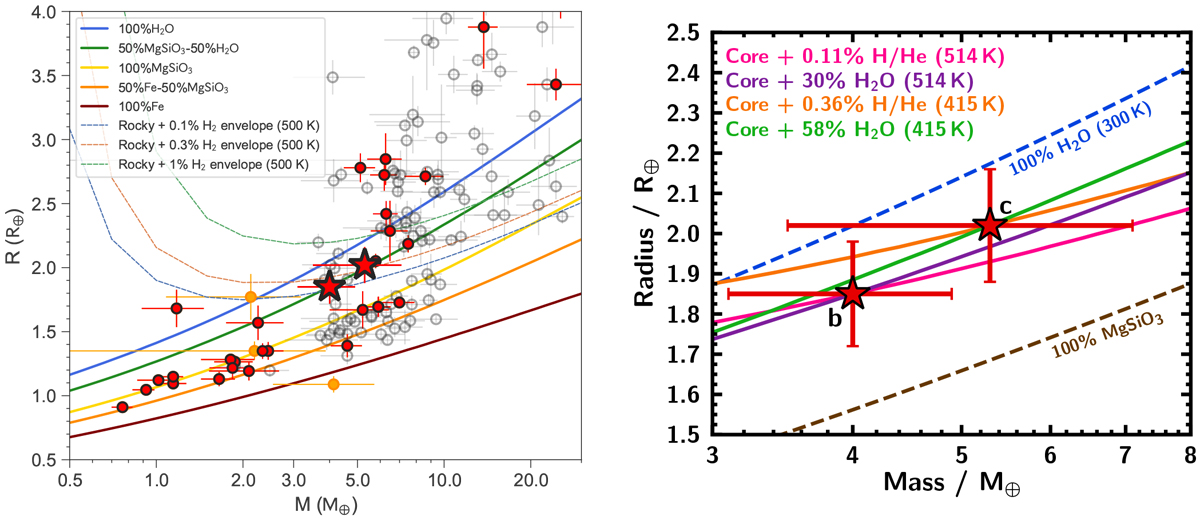Fig. 10

Mass-radius diagrams in Earth units. In the left panel, open circles are transiting planets around F-, G-, and K-type stars with mass and radius measurements better than 30% from the TEPCat database of well-characterized planets (Southworth 2011); red circles are planets around M dwarfs with mass and radius measurements; orange filled circles are planets around M dwarfs with mass determinations worse than 30%; and the red stars are TOI-776 b and c, which have massesdetermined with accuracies of 23 and 34%, respectively. In the left panel, the color lines are the theoretical R-M models of Zeng et al. (2016, 2019). In the right panel, the solid pink and purple lines show the models from Sect. 6.3 that are consistent with the mass and radius of TOI-776 b, and the orange and green lines show compositions consistent with the mass and radius of TOI-776 c, assuming an Earth-like core (1/3 iron, 2/3 silicates).
Current usage metrics show cumulative count of Article Views (full-text article views including HTML views, PDF and ePub downloads, according to the available data) and Abstracts Views on Vision4Press platform.
Data correspond to usage on the plateform after 2015. The current usage metrics is available 48-96 hours after online publication and is updated daily on week days.
Initial download of the metrics may take a while.


